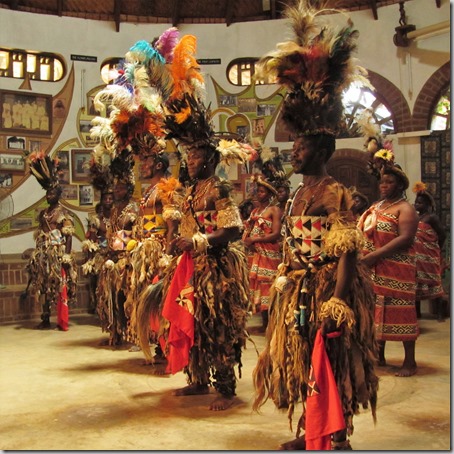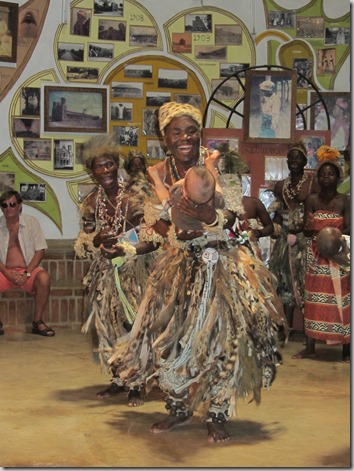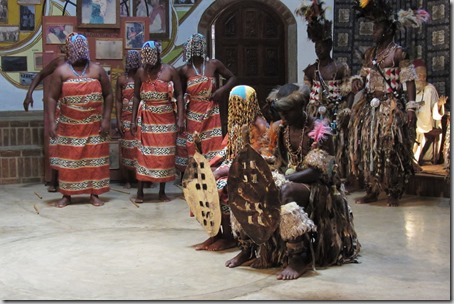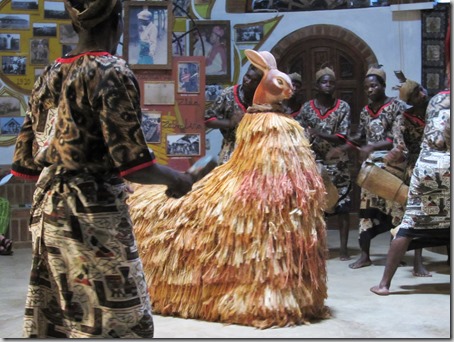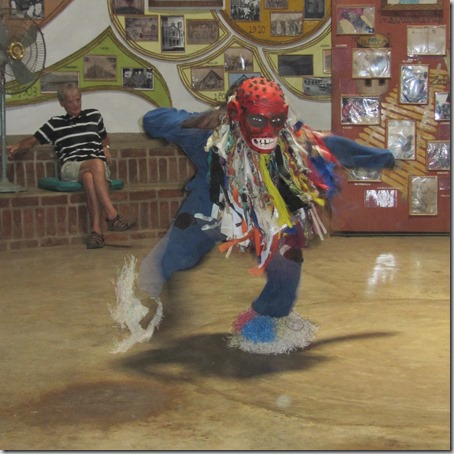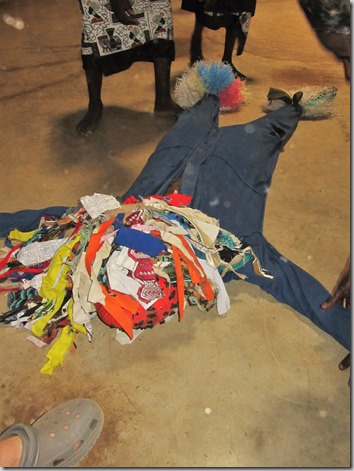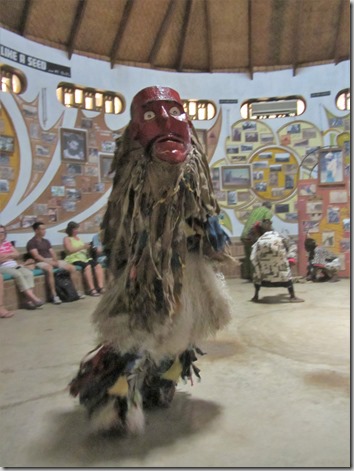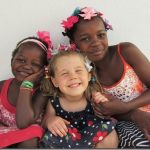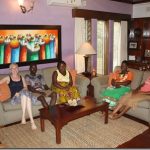I had the most delightful cultural experience this past weekend. Our Community Liaison Officer or CLO (my soon-to-be title!) planned a fabulous day trip down to Mua Mission Cultural Center about 2.5 hours outside of Lilongwe. And while I’ve had lots of opportunities to interact with Malawians, I’ve had very few opportunities to learn about their culture and traditions. And THAT is what I loved so much about this experience.
The mission is over 100 years old and is run by Catholic missionaries. The priest we met who provided commentary in between the dances was celebrating his 50th year living at Mua.
Upon arriving at 10 AM, we were treated to a 2 hour program showcasing cultural dances from the 3 main tribes that comprise Malawi (the Ngoni, Chewe and Yao). The dancers were all husband/wife couples and there was even a woman that danced with her baby on her back the entire time.
Speaking of babies . . . at one point a dancer came over and gestured for my friend to hand over her baby. I would have been terrified to watch my baby be whirled around a dance floor, but she seemed quite chill (and the baby was certainly loving it).
Next up was a dance that celebrated marriage. I thought the beaded headpieces were especially cool.
The final part of the program showcased Gule Wamkulu (Goo-lay Wum – k00 – loo) dances from the Chewe tribe. Gule Wamkulu is a secret cult and ritual dance that dates back to the 17th century. These dances are performed exclusively by males and are done following the harvest, but also for deaths, weddings and initiation ceremonies. The Gule Wamkulus wear wood or straw masks and elaborate costumes that depict dead people or animals. The dances are meant to communicate with their ancestors, to drive away evil spirits and to teach moral and social lessons. Here’s a short example of what one looks like:
During our performance, we saw probably 8 different Gule Wamkulu dances. Here is one character depicting a rabbit.
Here is one depicting a famous man that had died in the village. The character was created in his likeness and this costume was used during his funeral. The Gule Wamkulus reminding me of the Tasmanian Devil in that they would spin and spin and spin and then STOP. And then repeat. The energetic dancing and dramatic masks are meant to both entertain and scare people.
And here’s a picture of the Gule Wamkulu falling dead at the end of the dance.
As I mentioned above, these dances are also meant to teach moral and social lessons. In this one the character represents AIDS and it’s meant to instruct the people on how to avoid getting the disease.
Gule Wamkulu rituals are still an active part of Malawian life today. I have seen Gule Wamkulus on the roadside and riding in trucks. There is a great secrecy about the society, as no one knows who is actually a Gule Wamkulu. If you’re interested in learning more about this tradition, here are a few resources I found:
https://en.wikipedia.org/wiki/Nyau
http://www.unesco.org/culture/intangible-heritage/22afr_uk.htm
http://museum.msu.edu/exhibitions/virtual/greatdance/introduction.html
There was also a great museum that we toured, as well as some incredible carvings on sale in their workshop. It was well worth the trip and I’m already looking forward to leading a trip back there next year (hopefully with Nick and Nia too)!
